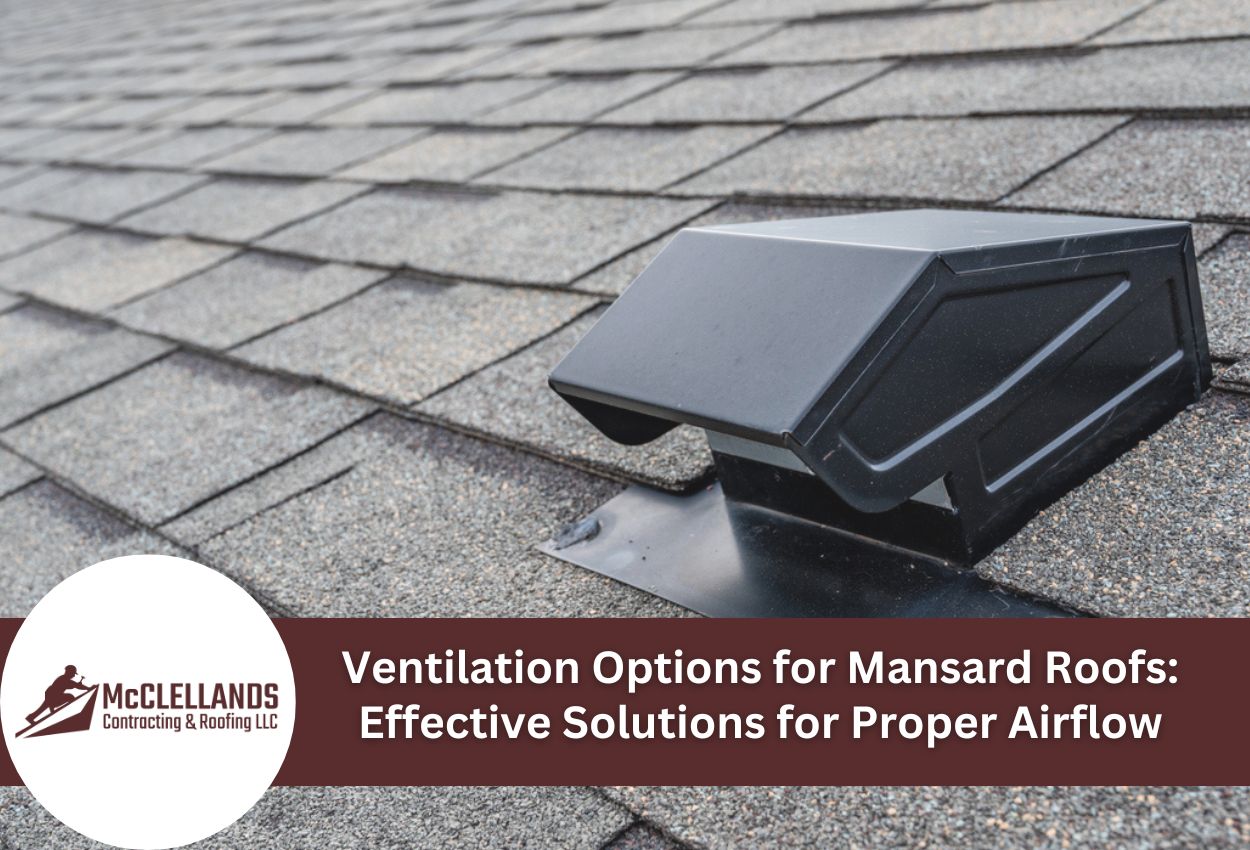Are you tired of dealing with a hot, stuffy attic?
Proper ventilation is essential to keep your attic comfortable and protect your home from the effects of excess heat and moisture. One way to improve ventilation in your attic is by installing soffit vents.
In this article, we'll delve into the role of a soffit vent in attic ventilation and discuss the benefits of proper ventilation in your home.
So, if you're interested in keeping your attic cool and your home healthy, keep reading!




What Are Soffit Vents, And How Do They Work?
Soffit vents are an important component of attic ventilation systems. They are designed to be installed under the fascia boards along the eaves of a roof. Their main purpose is to balance the ventilation in the roof and provide airflow to the attic, which can help extend the life of the roof. But how does the soffit vent work? Essentially, they allow outside air to enter the attic through the space under the roof's eaves. This fresh air helps to regulate the temperature and moisture levels in the attic, which can prevent damage to the roof and the rest of the home. If your home has roof overhangs and sufficient space to install soffit vents, experts recommend adding them to your roof ventilation system. They can be particularly helpful if your house already has small gable end vents, or a ventilator high in the roof, as they can help increase airflow.
Benefits Of Soffit Vents
There are many benefits of installing soffit vents on your roof:- Properly ventilated attics can improve energy efficiency and prevent structural damage. A soffit vent help regulate the temperature and moisture levels in the attic, which can prevent ice dams from forming and attic condensation in cooler months.
- In warmer months, they allow fresh, cool air into the attic while roof vents blow out hot air, helping to keep your home cooler and potentially reducing your air conditioning costs.
- A soffit vent can help extend the life of your roof. Providing a steady flow of air to the attic can help prevent damage to the roof structure and shingles.
- Installing soffit vents can improve the overall air quality in your home. Proper ventilation helps prevent mold and mildew growth, which can be harmful to your family's health.
How To Install Soffit Vent
Installing soffit vents can help improve the ventilation in your attic and protect your home from the effects of excess heat and moisture. Here are the steps involved in installing soffit vents:- To cut the hole for your vent, first mark two parallel lines 2 inches apart on the soffit. Overlap the edges of the cutout by ½ inch, allowing room for the vent. Then, using a portable circular saw set to a depth of ½ inch, cut along the chalk lines and remove the excess soffit material.
- To remove the soffit, use a saber saw or chisel to cut a 2-inch wide strip from the top and bottom of the framing. Then pull the strip off with a pry bar, removing any nails that remain in the framing with a cat's paw tool.
- To secure a vent to the soffit, first lay the strip vent down on a flat wood surface and drill 1/8-inch diameter screw holes through both flanges. Then space the holes 12 to 14 inches apart with the help of an assistant. Once you've positioned the vent over the cutout slot in the soffit, secure it in place by driving screws through the flanges into the soffit.
- Screw the vent to the soffit with ½-inch sheet-metal screws. Follow that with additional strips of venting until you reach the end of the roof. Cut off the last strip with aviation snips.
- When installing soffit vents, make sure there's no insulation blocking the flow of air. If you used fiberglass batts to insulate the attic, pull back any that are blocking the vent holes. If you used blown-in insulation, push it back so that it doesn't block vent installation.
- To keep insulation from blocking the airway to your roof's vent, install a ventilation baffle made of molded polystyrene in each rafter bay. The baffles create channels that direct incoming air upward.

How Many Soffit Vents Do You Need?
As a general rule, your attic should have at least one square foot of ventilation for every 300 square feet of attic space. This means that if your attic is 900 square feet, you should aim for at least three square feet of ventilation, which could be achieved with three one-square-foot soffit vents or one three-square-foot vent. If you are still determining the number of soffit vents you need, it's always a good idea to consult a professional for guidance.Where Should Soffit Vents Be Placed? How Far Apart Should They Be?
When installing soffit vents, it's important to place them in the right locations to ensure proper ventilation. In general, soffit vents should be installed along the bottom of the soffit, which is located below the fascia board along the eaves of your roof. They should be spaced evenly around the perimeter of the roof. The distance between soffit vents will depend on the size and type of vents you are using. It's generally recommended to space soffit vents 12 to 14 inches apart to ensure adequate airflow. However, it's always a good idea to consult a professional or refer to the building codes for your area when determining the number and placement of soffit vents.
What Types Of Soffit Vents Should You Install?
There are several types of soffit vents that you can install to improve the ventilation in your attic. Some common options include: Continuous Soffit Vents: These vents run the entire length of the soffit and are designed to provide continuous airflow to the attic. Circular Soffit Vents: These vents are circular and typically installed in groups along the soffit to provide ventilation. Perforated Soffit Vents: These vents have small holes or perforations that allow air to pass through. They are often used in conjunction with other vents and best suited with vinyl siding.What Is The Best Soffit Material For Your Project?
When it comes to choosing a material for your soffit vents, metal is a popular option due to its durability and resistance to water damage and other elements. Metal soffit vents, such as copper or steel, can be a great choice for both residential and commercial buildings and are suitable for use in any climate. In addition to their practical benefits, metal soffit vents can also be an aesthetic choice for many buildings. They can complement a variety of architectural styles and add a sleek, modern look to the exterior of a home or building. It's worth noting that other materials are available for soffit vents, such as plastic or wood. However, metal tends to be more durable and long-lasting, making it a popular choice among most professionals and roofing contractors.



